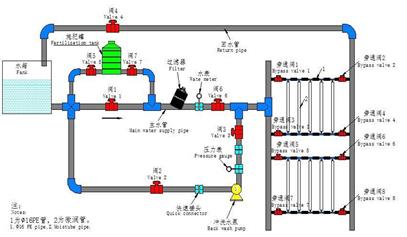The 28th “World Water Day” of the United Nations fell on March 22, 2020. This year’s World Water Day, themed “Water and Climate Change”, calls for putting water resources on the top of the climate change agenda, warns that extreme weather events are making water resources rarer and more unpredictable and that mankind are faced with heavier pollution, stresses that as precious resources for mankind, clean water resources are necessary for the survival of humanity, and reaffirms that mankind needs safe and sustainable management of water resources.
On this special day, “Water Droplet” will take you to China Institute of Water Resources and Hydropower Research (IWHR) to probe into the relationship between water and climate change, and consider how to address and mitigate climate change from the perspective of water resources.
Global climate change has become an indisputable fact, and extreme weather and abnormal circulation of water droplets will become normal for some time to come. This cannot be changed by the family of water droplets alone, but requires human beings to actively adjust their modes of production and life, so as to be accustomed to such water droplets that already ‘do not play by the rules’, be adapted to and mitigate global climate change and then strike a new balance for the development of human society under new climatic conditions. Hence, excellent scientists and far-sighted representatives from all walks of life all over the world have already taken actions. Today, I’ll take you to meet scientists and engineers at IWHR and see what they have done and are doing for the wellbeing of water droplets and human beings.
How should human beings adapt themselves to climate change?When climate change becomes a reality, people need to first recognize and strive to be adapted to it and taking active measures to change the status quo. Only by doing so can we buy time for the mitigation of climate change.
1. Research on Climate Change Mechanism
There’s an old Chinese saying goes: “If you know yourself and your enemy, you’ll never lose a battle.” How can we adapt ourselves to climate change? First of all, we should understand the mechanism of interaction between climate change and hydrologic cycle, and to what extent climate change affects river runoff, before we can make effective, reasonable countermeasures.
In this regard, IWHR scientists have delved into the mechanism of interaction between climate change factors at different scales and hydrologic elements.
They have creatively applied the high-precision downscaling technology based on between stepwise cluster analysis and Copula dynamic coupling statistics to identify the evolution of global water resources, diagnose the development trend of extreme drought and flood events and then analyze the response mechanism of hydrologic processes in a changing environment.
![]()
![]()
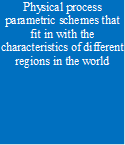
![]()
![]()
![]()
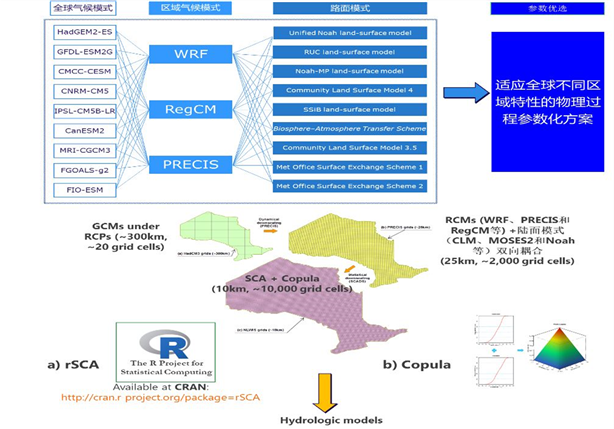
△ Optimization of “Atmosphere-Land Surface” physical process parametric and “Drivers-Statistics” downscaling coupling technology
They have established an evaluation model containing a variety of drought indexes and comprehensive drought and flood indicators, and analyzed the evolution characteristics of extreme events such as drought and flood on a global scale and in typical regions. Supported by data resources, research results and cloud platforms, they have also built a cloud platform for data sharing of global water resources and drought-flood map.

![]()
![]()
![]()
![]()
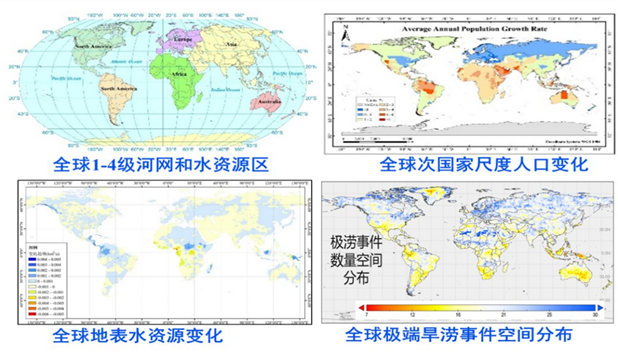
△ Integrated evaluation of global surface water resources evolution and drought and flood events
They have conducted research on the response mechanism of hydrologic processes in a changing environment, being able to anticipate corresponding changes of the spatial and temporal distribution of water resources in different climate change scenarios. That provides proactive guidance for related human work at all levels, such as policy making, management measures and emergency response.
2. Disaster Warning, Forecasting and Prevention & Control
Climate change causes changes in global temperature and humidity, leading to frequent occurrences of water-related disasters such as high temperature heatwaves, rainstorms, typhoons and droughts. Reducing disaster losses and safeguarding human life and property safety are fundamental requirements for tackling climate change.
Therefore, IWHR scientists have actively conducted research on flood and drought disasters, working on improving and upgrading technologies for disaster warning and forecasting in order to continuously enhance social resilience to secondary disasters caused by climate change.
Large-scale drought monitoring and forecasting and disaster risk prevention technologies. They have proposed the high spatio-temporal resolution meteorological-hydrological drought index, developed a quantitative analysis and assessment model for large-scale drought events and the comprehensive drought assessment technology taking into account underlying surface conditions, the drought process-based dynamic assessment technology for agricultural, urban and ecological drought risks, and the technology for comprehensive prevention of large-scale drought risks.






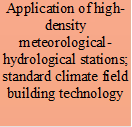
![]()
![]()
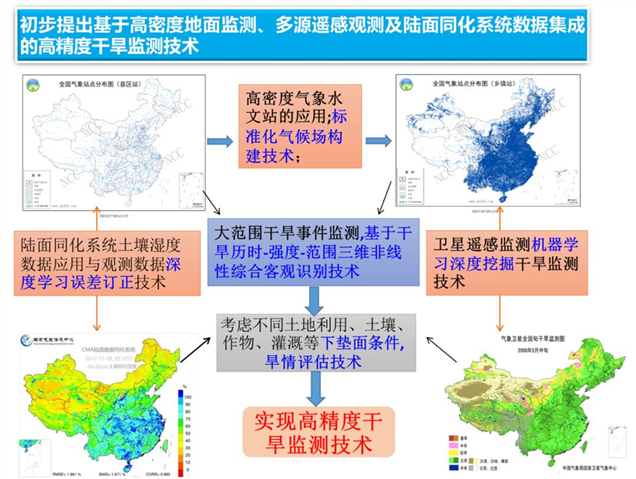
△ Drought monitoring based on high-density meteorological-hydrological and high-definition land data assimilation system
Watershed-scale flood risk assessment system. Targeting typical river basins in China, they have developed the watershed flood risk scenario analysis system and carried out quantitative analysis of watershed flood risk evolution scenarios caused by climate change and human activities, which can help reduce flood losses and support decision making in contingency plans.
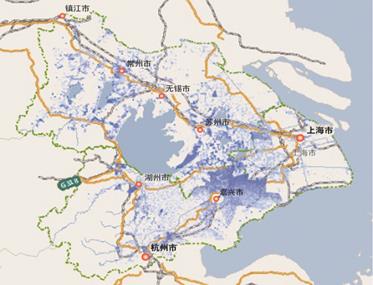
△ Flood risks in typical river basins under the sea level rise scenario
Research on the evolution of urban lake areas. Based on multi-source remote sensing data, they have conducted 12 periods of long time series dynamic monitoring of lakes in typical cities during 1973-2015 and carried out quantitative analysis of the impacts of changes in precipitation and temperature and human activities on lake areas.
![]()

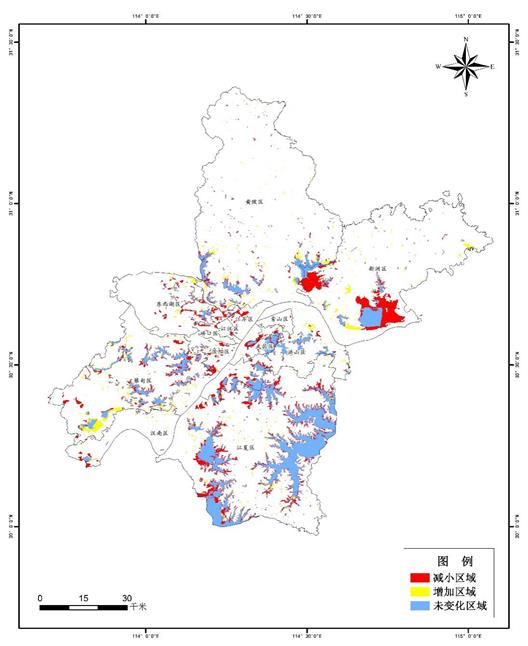
△ Changes of river and lake areas in typical cities during 1973-2015
Research on urban flood simulation technology and its application. They have overcome problems such as inefficient large-scale urban flood simulation calculations and inadequate engineering solutions, established the one-dimensional model of river channels, region-specific two-dimensional model of land surface, underground pipe network model and the flood analysis model based on the coupling calculation of the above-mentioned factors, which enables full simulation of urban storm flood movements, developed the pilot water-logging warning project as well as the urban river and lake regulation system, enriching the practices of river and lake regulation in typical cities.
![]()
![]()
![]()
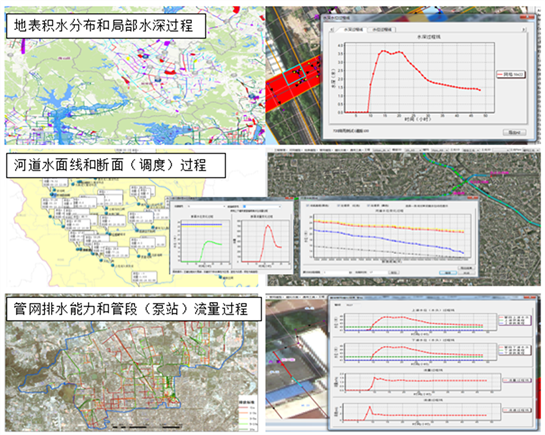
△ Calculation results of the urban flood simulation model
3. Water saving in agriculture
Abnormal precipitation caused by climate change will trigger uneven distribution of precipitation, leading to droughts and floods and causing direct impact on agricultural production, thus threatening food security. IWHR scientists have carried out R&D of the precise irrigation water-saving technology to provide technological support for agricultural adaptation to the impacts of extreme climate .”
Focusing on precise drip irrigation technologies and products, IWHR experts have established a technical application mode that integrates a series of precise drip irrigation technologies guaranteeing low pressure and high uniformity, providing pressure compensation for broad width, and featuring root-avoiding and anti-clogging, which fit regional characteristics in China and have been promoted and applied to 14.14 million mu (about 2.33 acres) of land in 16 provinces and municipalities all over China, with their influence reaching nearly 30 million mu of water-saving farmland nationwide, direct economic benefits of 6.223 billion RMB and 29.778 billion m3 of water saved.
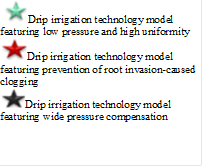

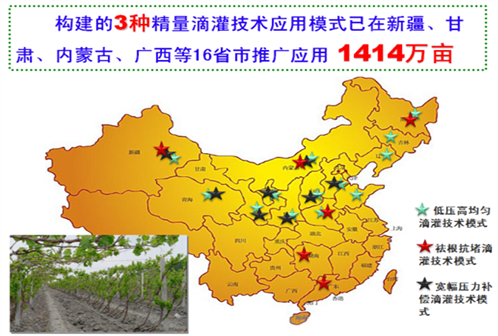
△ Application and demonstration of precise drip irrigation achievements
With respect to the impacts of extreme climate on agriculture, IWHR experts have put forward the model of “shallow-wet-dry” alternative irrigation for rice in cold regions, thereby saving averagely 150-200m3 of water per mu and increasing rice production by 5%-10%.
To meet the water-saving needs in arid and semi-arid regions, IWHR experts have developed technologies such as expansion of soil water storage capacity and inter-plant water harvest in fields, established the system of supplementary irrigation in key growing stage of the crops, and formed the deficit irrigation model for arid regions.
To meet the water-saving needs of commercial crops, IWHR experts have developed tubular all-purpose semipermeable membranes made of polymer materials, invented the moistube-irrigation technology, which is also the only modern water-saving irrigation technology invented by China, averagely saving water by 54% and increasing production by 34%.
|
|
△ Moist-tube irrigation system
|
|
△ Illustration of moist tube
4. Construction of a Water-Saving Society
In order to address the global water crisis under the influence of climate change, society-wide water saving is a top priority.
For this reason, IWHR Scientists have led research on theories, technologies and practices in respect of building a water-saving society in China, broken new ground in the theoretical methods of the whole process efficiency analysis and regulation of the social water circulation, made breakthroughs in a number of key water-saving technologies and processes in key areas, established a hierarchical system of technical standards for water saving, and formed the construction model, price mechanism and institutional plan for a water-saving society.
After 10 years of promotion and application, the market size of China’s water-saving industry has exceeded 500 billion RMB, effectively facilitating a sharp increase of water use efficiency (WUE) nationwide.
![]()
![]()
![]()
![]()
![]()
![]()
![]()

![]()
![]()
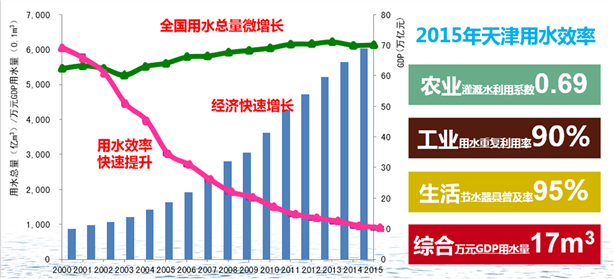
△ Achievements in construction of a water-saving society
![]() Through
scientific research, practice and application by experts in all aspects, human
beings deal with the impacts of climate change in an active and scientific
manner, observe objective laws, adjust their behaviors, in a bid to seek
dynamic balance between man and nature in a changing environment.
Through
scientific research, practice and application by experts in all aspects, human
beings deal with the impacts of climate change in an active and scientific
manner, observe objective laws, adjust their behaviors, in a bid to seek
dynamic balance between man and nature in a changing environment.
How Humans Can Mitigate Climate Change?
Adaptation alone will not fundamentally address the threats and challenges posed by climate change, and human beings have to take radical measures to slow down climate change and mitigate its effects, so as to safeguard long-term sustainability of human society.
To mitigate climate change, we should fundamentally reduce GHG emissions and cut the amount of carbon released into the atmosphere, which requires the R&D and application of various emission reduction, carbon sink and carbon sequestration technologies and measures.”
1. Exploitation and Utilization of Non-Fossil Energy

Hydropower, as an important clean energy, plays a key role in reducing fossil fuel consumption and lowering GHG emissions. As of 2018, the annual hydropower generated globally registered 4.2 TWh, reducing 4 billion tons of CO2 emissions per annum, equivalent to 10% of the global total annual CO2 emissions. According to the statistics of the National Energy Administration (NEA), China’s installed hydropower capacity reached 360 million KWh as at the end of 2019, which accounted for 42.9% of the total installed capacity of non-fossil energy, making important contributions to the mitigation of global climate change.
IWHR undertakes the research on key technological issues in nearly all major water resources and hydropower projects in China, and plays a critical role in scientific and technological support.
It has provided technical basis for addressing sedimentation problems in the Three Gorges Project (TGP);
It has solved complex layout, flood discharge and energy dissipation problems for nearly 100 projects including the TGP, Ertan Hydropower Station and Xiaowan Hydropower Station;
It has established the theories of aseismic design of earth-rockfill dams in China;
It has created the theory and method of high slope stability analysis, set up a large geotechnical centrifuge modeling laboratory and completed tests for numerous hydropower projects;
It
has long been engaged in the research on theories and engineering technologies
such as reservoir-induced earthquake, seismic ground motion input, structural
dynamic response, dynamic characteristics of materials and seismic design of
hydraulic structures;
It has edited China’s first Standard for Seismic Design of Hydraulic
Structures, and completed the research on seismic safety of ultra-high dams
such as the TGP, Xiaowan Hydropower Station and Xiluodu Hydropower Plant;
It has created the mass concrete temperature control theory and analysis method, put forward methods of optimizing arch dams and developed universal procedures, established a system of key technologies for structural safety of high concrete dams, with a raft of research findings incorporated into relevant specifications and applied to more than 100 high dams, including the TGP and Jinping I Hydropower Station;
It has developed a large number of new water-stop, impervious and hydraulic structure materials and new construction technologies, launched new products such as GB series sealing products, epoxy patching materials, special concrete admixtures, which are widely applied to new project construction and reinforcement;
It has successively undertaken optimized design of water turbines for the TGP, Jinping Hydropower Station and other projects;
Its proprietary H9000 computing monitoring system has been successfully applied to over 300 hydropower stations, pumped storage power stations and cascade dispatching projects at home and abroad, including the TGP, Xiluodu Hydropower Plant, Xiangjiaba Hydropower Station and the Brazilian Ilha Hydropower Plant.
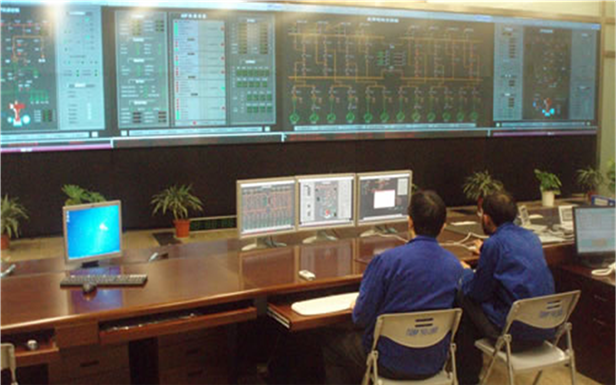
△ The iP9000 intelligent integrated platform applied to central control of the TGP
![]()
![]()
![]()
![]()
![]()
![]()
![]()
![]()
![]()
![]()
![]()
![]()
![]()
![]()
![]()
![]()
![]()
![]()
![]()
![]()
![]()
![]()
![]()
![]()
![]()
![]()
![]()
![]()
![]()
![]()
![]()
![]()
![]()
![]()
![]()
![]()
![]()
![]()
![]()

![]()

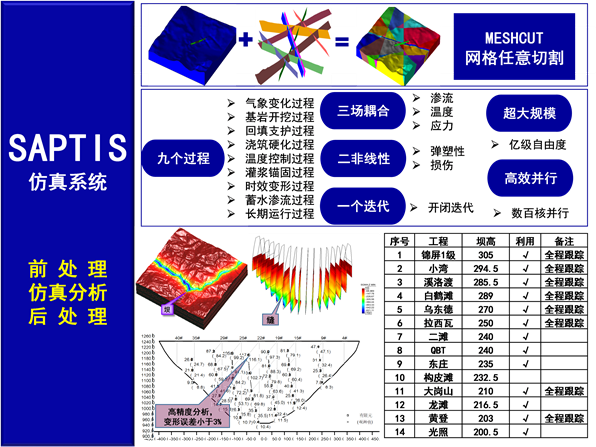
△ SAPTIS software system for dam simulation calculation applied to the Xiluodu Hydropower Plant
2. Conservation of Carbon Sink Resources

Apart from emission reduction through hydropower projects, forests, grasslands, oceans, lakes and wetlands are also important natural resources absorbing and solidifying carbon dioxide and regulating climate. IWHR experts have made significant contributions to the development and conservation of these carbon sink resources through theoretical innovation and technology R&D.
With respect to water ecosystem protection and restoration, IWHR experts have developed the Technical Guide to Water Ecosystem Restoration, put forward a river & lake health indicator system and relevant standards in line with the characteristics of rivers and lakes in China, and carried out assessment of 36 rivers and lakes including the Yellow River mainstream, the Huaihe River mainstream and the Songhua River mainstream.
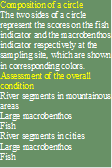
![]()

![]()
![]()
![]()
![]()
![]()
![]()
![]()

![]()
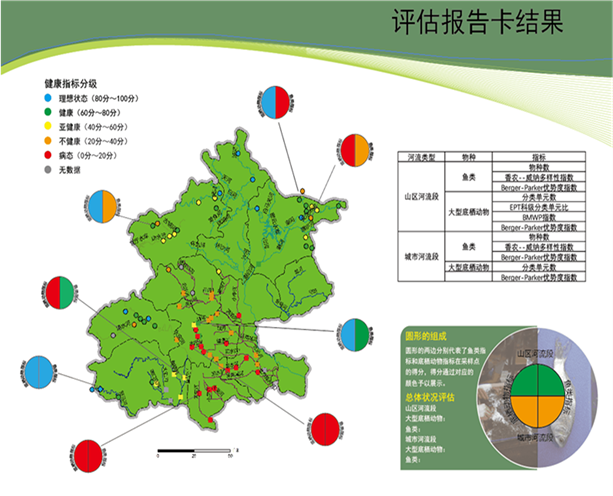
△ Evaluation of the health of rivers in Beijing
IWHR experts have conducted research on how to establish methods of simulating water-salt balance in inland lakes and ecological response, built a mathematical model of coupled water-salt balance to solve the problems with inland lakes in China, such as water volume reduction and salinity increase, and determined the scientific lake water volume and salinity thresholds suitable for spirulina growth through a case study of the lakes where the world’s three major spirulina naturally grow.
![]()
![]()
![]()
![]()
![]()
![]()
![]()
![]()
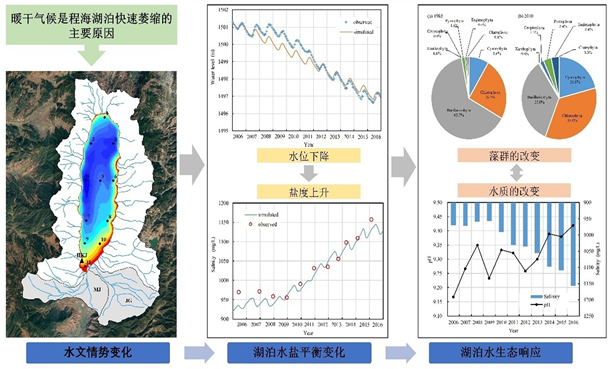
△ Changes in water-salt balance in inland lakes and their impacts on ecology
With respect to grassland protection, IWHR experts have developed a complete set of water supply system for solar photovoltaic pastures by integrating new energy, automation and water transport and distribution technologies, thus addressing drinking water supply for decentralized nomadic residents, greatly increasing grassland productivity, mitigating grassland degradation and reducing GHG emissions.
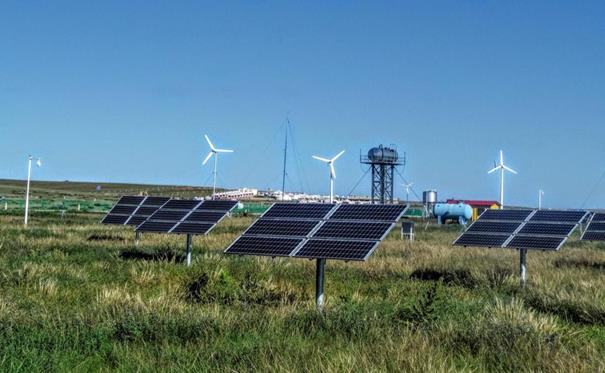
△ New energy water supply equipment at grassland in North China
3. Reduction of Emissions from Sewage Treatment

To reduce increased GHG emissions from sewage treatment, IWHR experts have developed centralized and decentralized water supply facilities through biological slow filtration, water treatment equipment through biological slow filtration and automated rough filtration – refined filtration water treatment equipment, and carried out demonstration and application of micro-polluted water treatment in rural areas in Gansu, Hubei, Guizhou and Fujian, which have cut down rural water pollution while reducing GHGs from sewage treatment.
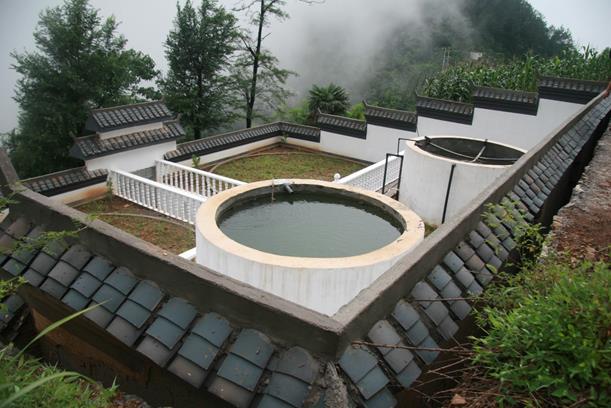
△ Centralized water treatment through biological slow filtration
4. Soil and Water Conservation

Soil and water conservation is an important means to reduce soil erosion, protect and promote vegetation recovery and then strengthen carbon sink, and also an important foundation for water ecosystem protection and construction. IWHR has long been committed to the research on sediment and water and soil conservation, and has delved into issues in the process of soil erosion, transport and sediment in different river basins, such as dynamic mechanisms, mechanisms of sediment and runoff reduction through water conservation and impacts of treatment through water conservation on the evolution of river systems.
IWHR experts have probed into the sediment transport law, flow and sediment regulation measures, evolution trends of erosion and deposition in downstream rivers and the relationship between rivers and lakes in connection with the TGP, flow and sediment regulation system, downstream river and beach treatment in connection with the Yellow River, and comprehensive management measures for the Huaihe River, providing powerful technical support for river management.
IWHR experts have expounded the dynamic process and regulatory
mechanism of soil erosion under the action of water and wind, developed a
number of soil conservation measures and technologies and formed a system of
technologies for comprehensive control of soil erosion and ecological
restoration based on small river basins.
It has emphatically studied the mechanism and process
of flow and sediment changes in rivers and lakes against the backdrop of global
climate change, and conducted the research on soil erosion mechanism and
process forecasting, automation and information application in soil
conservation test observations, and soil erosion prevention and control
technologies. IWHR continues to conduct comprehensive control and demonstration
of soil erosion in areas with different types of erosion in China, and formed
control technologies for the Loess Plateau region in Northwest China, black earth
region in Northeast China, water and soil conservation region in the upper and
middle Yangtze River and red soil region in South China.
![]()
![]()
![]()
![]()
![]()
![]()
![]()
![]()
![]()
![]()
![]()
![]()
![]()
![]()
![]()
![]()
![]()
![]()
![]()
![]()
![]()
![]()
![]()
![]()
![]()
![]()
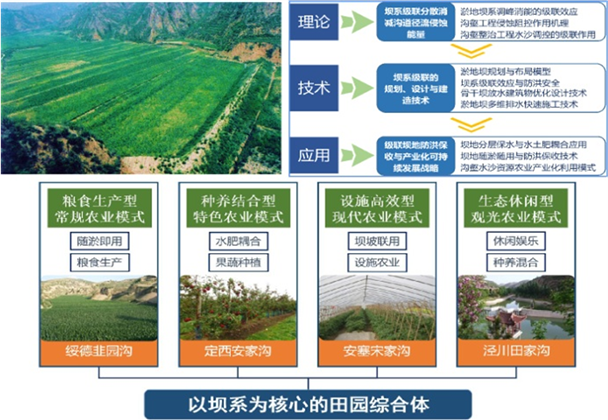
△ Key technologies and models for erosion control of gullies in Loess Plateau
![]()
Despite the impacts and challenges posed by climate change, we continue to deepen our understanding and practical exploration of water and climate change, and will never stop their pace of seeking social civilization progress, building rivers of well-being, pursuing beautiful life and promoting sustainable development.
Source: IWHR Division of International Cooperation
Technically
supported by: Department of Water Resources, Research Center on Flood and
Drought Disaster Reduction, Department of Water Environment,
Department of Irrigation and Drainage, Department of Sediment Research, IRTCES,
etc.
